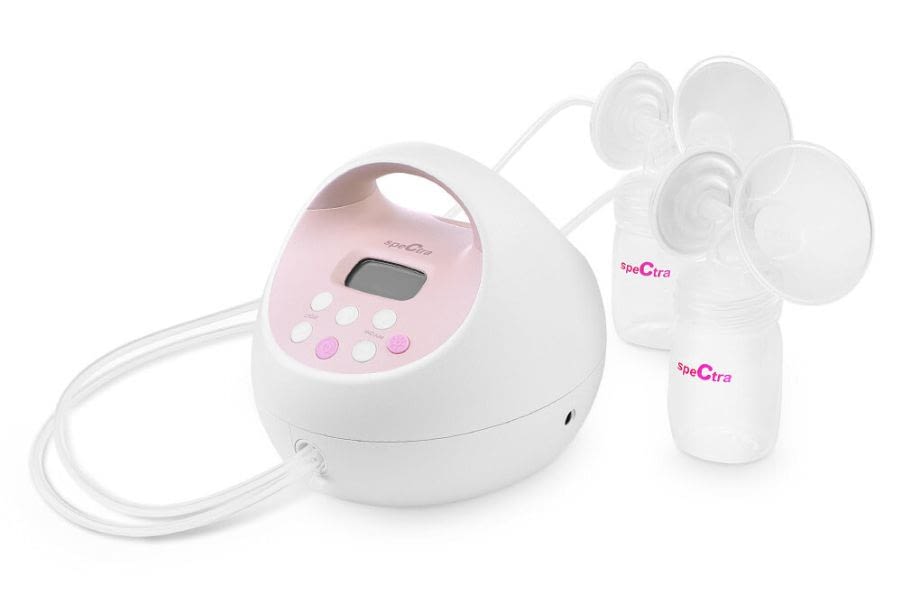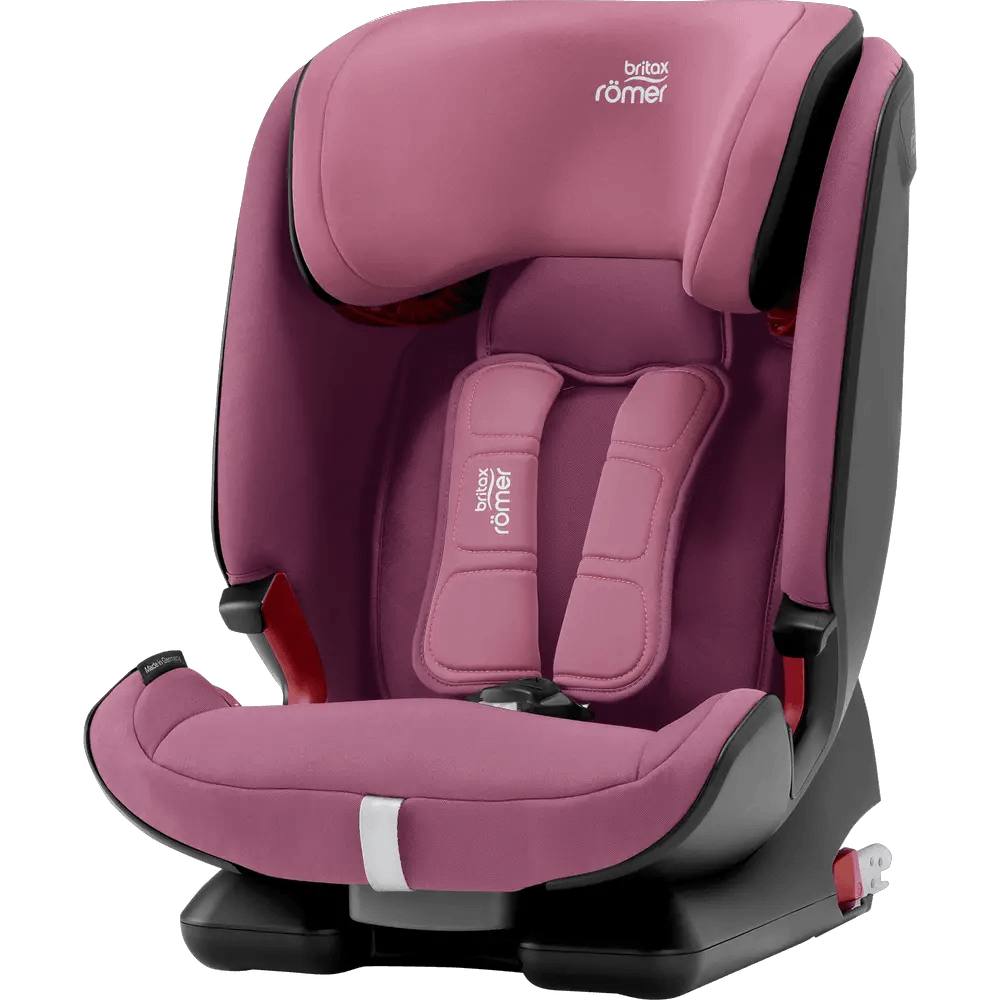Breastfeeding and pumping are two important ways to provide nutrition for your little one. However, juggling between the two can be daunting for some mothers. With the right approach and equipment, breastfeeding and pumping can benefit you and your baby.
In this blog, we will discuss some valuable tips and tricks on how to combine breastfeeding and pumping to maximize your milk production and maintain a balance between the two.
Related: Does Pumping Burn Calories?
How to combine breastfeeding and pumping schedule?
Balancing nursing with pumping can be challenging and rewarding for you and your breastfeeding baby.
By putting in some effort and planning, you can establish a pumping while breastfeeding schedule that caters to your baby’s dietary requirements while also being suitable for you and your little one. Therefore consider these things to start pumping and breastfeeding schedule 6 months.
Know what you need to breastfeed & pump
When nursing, it is essential to have the right equipment for a successful breastfeeding experience. There are several items that you may need, depending on your situation, which include:
Nursing bras and tanks: You will need comfortable bras or tanks to hold breast pads in place while nursing or breast pumping. Extra bras and tanks are also helpful if you need to change them throughout the day.
Breast pads: Disposable and washable breast pads can help absorb leaks, prevent skin irritation, and protect your clothing from milk stains.
Nursing pillow: A nursing pillow is essential for supporting your baby while breastfeeding. It also helps keep both of you comfortable during the process.
Nipple cream: If you experience any soreness or discomfort while nursing, applying nipple cream may provide relief.
Milk storage bags: If you are exclusively pumping, store your breast milk in a safe container for future feedings. Breastmilk storage bags are designed specifically for this purpose.
Choose the best breast pumps.
A breast pump may be necessary if you are expressing milk or plan to nurse but need assistance with milk supply issues. It can make your nursing process easier.
Options for exclusive pumping extra milk include
- Hand Expression: Hand expression is an excellent method of milk expression that can be performed anywhere. Learning this technique from an IBCLC or another qualified lactation consultant is recommended. Utilizing hand expression while in your baby’s presence can be advantageous, as it may help to trigger a letdown.
- Manual breast pump: Manual pumps are lightweight and low-cost solutions that can help you pump breast milk on the go. The downside is that they require a bit more effort from the user, as you have to squeeze the pump handle with one hand while cupping and massaging your breast with the other.
- Electric pump: Electric pumps are more efficient and use motors to do the work of expressing milk. They’re an excellent option for busy moms who need to express milk often. Electric pumps come in single and double models, meaning you can either pump from one breast at a time or from both breasts simultaneously. And you can avail the option to power pump.
- Hands-free pump accessories: Hands-free pump accessories are necessary for busy pumping moms. These items help you multitask while you’re expressing milk. Hands-free pumping bras, bottles, and other things make it much easier to pump while doing something else.

Establish a routine with the correct pumping technique: How should I breast pump?
Setting up a sample pumping schedule can help balance the two activities.
Having designated pumping times throughout the day, such as in the early morning, mid-morning, lunchtime, etc., enables you to sustain a consistent milk supply for your baby while also providing the freedom to be adaptable and cater to their demands.
Moreover, Pumping during the morning is advantageous as this is when milk production is at its highest. The correct technique, like power pumping, is essential to boost milk supply.
This includes positioning your pump correctly on your breast, adjusting the suction strength and speed, massaging your breast during pumping, and more. It can help you express more milk quickly, so it’s worth learning and practicing.
- Read the instructions: it’s essential to read the accompanying instructions before starting to pump to ensure you use it correctly and obtain the maximum benefit from each session.
- Warm-up: After a few pumping sessions, you’ll start to observe your milk flow slows. Try breast massage or gently rub your breast tissue before you begin pumping session.
- Choose the correct flange size: The size of your breast pump flange should fit comfortably around your areola without causing pain or discomfort. If it’s too loose, you won’t get a practical pumping session; if it’s too tight, it can be uncomfortable and even painful.
- Go slow: Start with a gentle suction until you find your rhythm. Speed up or slow down as needed, but take your time with your pumping schedules. When finished, removing the flange slowly is essential to allow any remaining milk to be released gradually.
- Clean and store: Thoroughly clean all the pump parts after each use. Bacteria can quickly build up if it is not correctly cleaned and stored.
The type of pump you use matters significantly when combining breastfeeding and pumping. Electric pumps are better as they mimic the suction and speed of your baby.
Related: How Long Does Breast Milk Last After Warming?
The hands-free pumps are more convenient as they allow you to pump hands-free, making it easier to multitask your daily routine. Also, consider a pump with different flange sizes to ensure you are expressing enough milk without experiencing any discomfort.
Make sure to keep track of milk flow.
Keeping a log or diary of your baby’s feedings and pumping sessions can benefit you and your baby. A record of the times, amounts, and types of milk consumed will help ensure your little one gets enough nutrition daily.
Build up a Full Milk Supply
Breastfeeding and pumping go hand in hand, and building up a breast milk supply is essential when combining the two. Start gradually pumping after breastfeeding sessions or when you would typically feed your baby.
It helps to encourage your supply to increase gradually; after some time, you will have enough reserves to go about your day. As your baby grows and their feeding demands increase, you can keep up by pumping during the day to keep up with the order.
Take breaks
Maintaining a composed state of mind is crucial. Taking periodic breaks, even for a few minutes, can help you feel rejuvenated and better equipped to handle breastfeeding and pumping sessions with renewed vitality.
Talk to your doctor.
If you have concerns about balancing breastfeeding and pumping, consider speaking with your healthcare provider for advice on managing them both best. They may also provide additional tips or strategies that can help make the process easier for you and your baby.
Take care of yourself.
When combining breastfeeding and pumping, it is easy to forget that you must take care of yourself physically, emotionally, and mentally. Ensure you eat a nourishing diet, stay hydrated, and get enough rest to avoid stressing yourself. Remember to relax when pumping and make it a self-care activity rather than a chore.
Find Support
Combining breastfeeding and pumping requires patience and support, especially if you are a new mother. Find support groups, lactation specialists, or other breastfeeding mothers who can offer tips and advice on managing your pumping and breastfeeding. Mothers with experience balancing the two can help you learn tricks to juggle your pumping and nursing schedule to increase milk supply.
How to Time Your Feeding & Pumping to Maximize Your Output
It is essential to start scheduling your feeding and pumping sessions effectively after determining your daily milk production baseline to increase your milk supply.
To help with timing feedings and pumping, consider the following suggestions:
- Nurse your baby on one breast for an extended period, then switch to the other side and pump for approximately 10-15 minutes. This will ensure you empty both breasts fully, allowing you to maximize your breast milk production.
- Time pumps so that they occur at least two hours apart throughout the day, with the last one occurring in the evening; this will help keep up your supply levels.
- Aim to have no more than 3-4 hours between nighttime feedings; this will give your body enough time to produce milk overnight to be used during the next day’s feedings.
- Establish a regular feeding schedule for your baby to help you predict when and how much milk each breast will produce.
- Avoid long periods between feedings or pumping sessions, as this can cause your body to slow down its milk production.
Read Also: Can Warmed Breast Milk Be Refrigerated Again?
Other tips for balancing between breastfeeding and pumping
If you need or want to pump breast milk for your baby, there are a few ways to balance breastfeeding and pumping. Here’s what you can do:
Nurse your baby before pumping.
Nurse your baby first before pumping and then pump after the breastfeeding session. It allows your body to build up an adequate milk supply and produce enough milk for the pump.
Pump in between feedings
Try pumping between feedings instead if you cannot nurse before each pumping session. Once the feeding has finished, take out the breast pump and begin expressing milk while still at the breast.
Avoid scheduling feedings
While it is essential to keep a pumping schedule, try not to schedule nursing or pumping sessions too closely together. It will help ensure your body has enough time to replenish its milk supply between pumping and breastfeeding sessions.
Breastfeed as much as possible.
Whenever possible, ensure you are breastfeeding your baby as much as possible. It will help keep up a healthy milk supply for the pump, but it also helps promote a stronger emotional bond between you and your child.
How do I know my breast is empty after pumping?
To know if your breast is empty after pumping, check the amount of milk that comes out during each session. If you consistently get less and less milk from each pump, it may be a sign that your breast is emptied.
Also, you can use a weighing scale to measure the amount of milk expressed in each session. Feeling your breast before and after pumping can also help, as you may feel a difference in fullness when the milk empties.
Finally, it’s important to remember that every mother will have a different experience with pumping, so what works for one person may only work for one person.
13 Reasons New Moms Choose to Both Breastfeed and Pump
Breastfeeding provides numerous benefits to babies and is strongly recommended by pediatricians worldwide. However, the method of feeding a child is ultimately a personal decision and a variety of factors go into it. For mothers who choose to breastfeed, pumping can be a great tool to assist.
Pumping breast milk can be great for moms looking to provide their babies with the best nutrition and closeness possible. Pumping has many benefits that can help make it easier for both parents to adjust to life with a newborn without compromising on providing their baby with the best nutrition.
Here are some of the top reasons why moms choose to breastfeed and pump:
- Eating on time: Feeding a baby can be unpredictable, but pumping allows moms to have milk ready when needed.
- Freedom: With pumped milk, parents can leave the house for extended periods and leave the baby with someone else, knowing that enough food is available.
- Emotional Bonding: Breastfeeding allows moms to connect more deeply with their babies. Skin-to-skin contact during breastfeeding releases oxytocin, a hormone that promotes bonding. It can be an emotional and calming activity for both mom and baby. Pumping allows moms to continue to provide breast milk for their babies, even if they cannot be there for every feeding.
- Better for Baby: Breast milk is the optimal source of infant nutrition. Babies fed breast milk have fewer ear infections, respiratory illnesses, and digestive problems than formula-fed babies.
- Sleep: A tired mom can pump milk and get a break from night feedings, allowing both mom and baby to rest more easily.
- Milk supply: Moms breastfeeding may need to supplement with pumped milk if their milk supply starts to dwindle or if latching on has an issue.
- Work: Working moms may be unable to breastfeed while away from home, but pumping allows them to provide their babies with breast milk while apart.
- Nutrients: Breast milk is packed with nutrients and vitamins not found in formula.
- Comfort: Some babies may prefer the convenience of a bottle and the closeness of being held during feeding times, which pumping can provide.
- Variety: Pumping allows moms to give their baby breast milk from different sources. It helps if they need to supplement or change things while away from home.
- Convenience: The convenience factor is one of the most frequently cited reasons moms breastfeed and pump. Breastfeeding provides your child with nourishment anywhere, anytime. By pumping milk and storing it, moms can have a supply of milk on hand ready to be warmed up at any time. Putting their breast milk into bottles also allows other family members to feed their little ones and give moms a much-needed break.
- Cost Savings: Breastfeeding and pumping can save families hundreds of dollars on formula, bottles, and other feeding supplies. Breast milk is free, and while breast pumps can be costly initially, they quickly pay for themselves in the long run. With proper care, a breast pump can last for multiple children.
- Health Benefits for Moms: Breastfeeding doesn’t just benefit babies; moms also enjoy a few health perks. Breastfeeding helps moms recover from childbirth more quickly. It also lowers the risk of various health issues such as breast cancer, ovarian cancer, type 2 diabetes, and high blood pressure. Plus, pumping allows moms to maintain milk production while away from their children, making it easier to continue breastfeeding when returning to work.
How to combine breastfeeding and formula?
Combining breastfeeding and formula feeding can both be great ways to nurse the baby. You can consider these things before starting your journey.
- First, consult a pediatrician about the best formula for your babies to ensure that they get all the nutrients they need and that there are no potential allergies or adverse reactions.
- When deciding how much formula to give your baby, stick to the manufacturer’s recommendations. Remember that breastmilk or formula should only make up a portion of your baby’s diet.
- If you’re breastfeeding and supplementing with formula, it’s essential to maintain an adequate milk supply for bottle feeding. To do this, you should continue to nurse your baby frequently throughout the day, even when supplementing with formula.
- It’s also important to pay close attention to how much formula you give your baby. Too much can lead to excessive weight gain, and too little can deprive your baby of essential nutrition. If you’re worried your baby isn’t getting enough milk, consult your doctor or lactation consultant.
- Finally, establish an excellent feeding routine and learn bottle feeding techniques for you and your baby. It will ensure that your baby gets the nutrition they need while also helping to promote successful breastfeeding.
Conclusion: How to balance breastfeeding and pumping?
Combining breastfeeding and pumping can be both rewarding and challenging at the same time. However, it can be made easier with the right tools, support system, and planning. Remember to take it one step at a time and be kind to yourself as you work to establish a balance between breastfeeding and pumping. With patience and persistence, you will find a rhythm that works for you and your little one.
As you strive to establish a harmonious balance between breastfeeding and pumping, you must take things gradually and be gentle with yourself. With perseverance and a positive attitude, you will eventually develop a routine that suits you and your baby.
Parents Also Ask
How soon can i breastfeed after pumping?
You can breastfeed immediately after pumping if you wish. Pumping does not interfere with your breastfeeding ability, and it can help stimulate milk production. It is safe to nurse your baby right after pumping or at any other time that works for you and your baby’s feeding schedule.
1 Visit today





